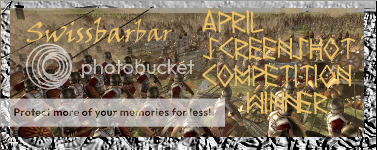I am puzzled in all my arrogance.
You propose to fight unarmed using Muay Thai (which I have done for three years before concentrating on Viking) against sword and shield? To punch in a steel helmet while parrying blows from a sword with your fists?
If I comment on that I will insult you even more than I apparently have, and that is not my purpose. My purpose is to exhibit the foolishness of the Salmon Leap under any circumstances in armed combat.
Or to throw sand in your opponent's eyes, in theory that is a much better idea than to leap around (though it was the Salmon Leap we were discussing, not who can beat who). However, you need a hand for that, a free hand, ie you would have to leave your sword/axe or your shield sheated/on your back. That is quite a gamble, if the opponent evades the sand you are pretty bad off while you struggle to get either in place. As a boxer you will be aware that gambling all on a KO to such an extent that you have to KO him or get KO-ed yourself is not the best of ideas except in very special circumstances, or?
I shall try to explain.
Now, please picture this if you will; you are on a field, ready to fight. You have experience you say, so it should be fairly easy to imagine. Now, your opponent come running up and leaps, at 109 Kg I imagine you are fairly tall as well, so he would have to leap pretty high to avoid not just your head, but the reach of your sword, right? As a boxer, you also know that sending of a blow (or a stab or cut with a sword) is incredibly fas,t you think your leaping opponent can clear you before you send of one? Whereever you hit him in his leap he will be injured as he lands = you have the advantage. Even if he did manage to miraculously kill you he will still be injured, and medical care back then left much to be desired, so you did not really want much of an injury, being a hero is not much fun if infection is eating your leg or arm is it?
See, it is not against me only it is stupid, it would be against you as well even though you have no training with weapons, it would be against
anyone who is not seeing action for the first time. It is a bit like the Back Roundhouse kick, it lookes pretty, but takes too long to be really practical unless your opponent is dazed or very surprised. In the ring if people did a Back Roundhouse at you when you were fully alert I imagine you would pile into them or get their knee with a low kick. If somebody leapt over you, you would stab or cut them.
As for "playing Vikings", this here is what the best of us do
https://www.youtube.com/watch?v=KVU2lCZ6Ybs, notice how they (I am not on this vid) move, feel free to Salmon Leap all you please against it. and yes, we have done test cuts with sharps, the cuts we make in Huskarl will easily cut a big ham and despite using blunts most of us have been stitched up loads of times from it. Last year a guy got a blade that pushed his eye aside and 2.5 cm into his brain (he is OK now), I carry permanent injuries to knees and elbows from Huskarl and has had the inside of my nose split by an axe though we try to be safe and it is only the best of us who does this (most fight freestyle, which is like Taekwondo, light contact). Thus I consider myself qualified to actually comment on the practicality of Salmon Leaps both in single combat and formation- and even to an extent that I come across as arrogant, otherwise I would keep my gob shut, as I have explained above Salmon Leaping is abject stupidity against anyone who is at his senses and knows what end to hold a sword- including you.
See what I mean?
As for books on it I cannot comment, we Vikes fight with a mixture of HEMA, Asian and logical deduction (a Daneaxe is to be swung f.x.). The best of us also fight the variation of HEMA called Huskarl and participate in HEMA trainings with medieval and renaissance weapons to broaden our horizons, but that does not help you much. In fact I am afraid any theories on Celtic fighting style will be much like ours as the Celts left even less written sources and depictions than the Vikings.


 x 15
x 15

 Reply With Quote
Reply With Quote









 )
)


 )That there where vikings who used drugs(plants,mushrooms)...they called them beserkers...is that true?
)That there where vikings who used drugs(plants,mushrooms)...they called them beserkers...is that true?

Bookmarks